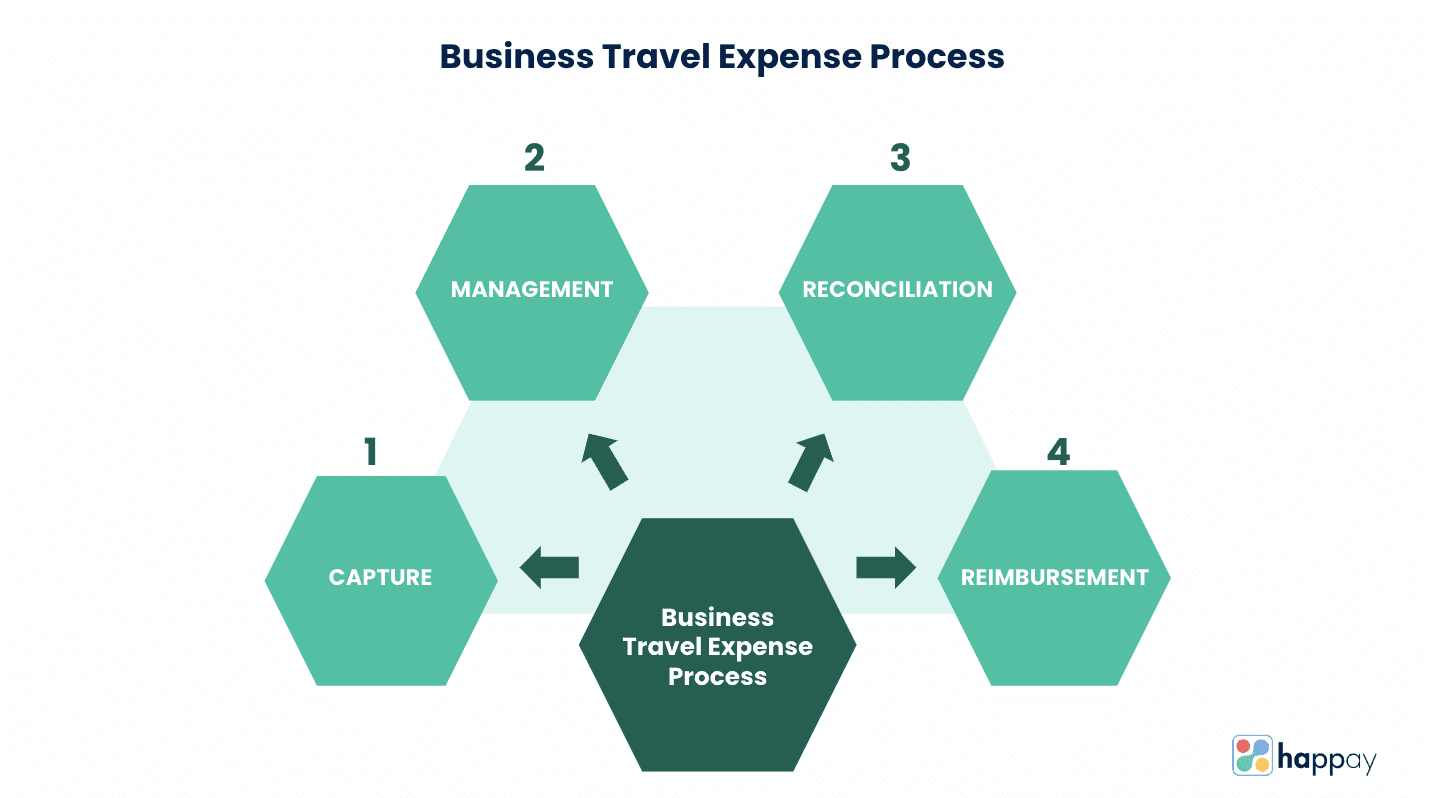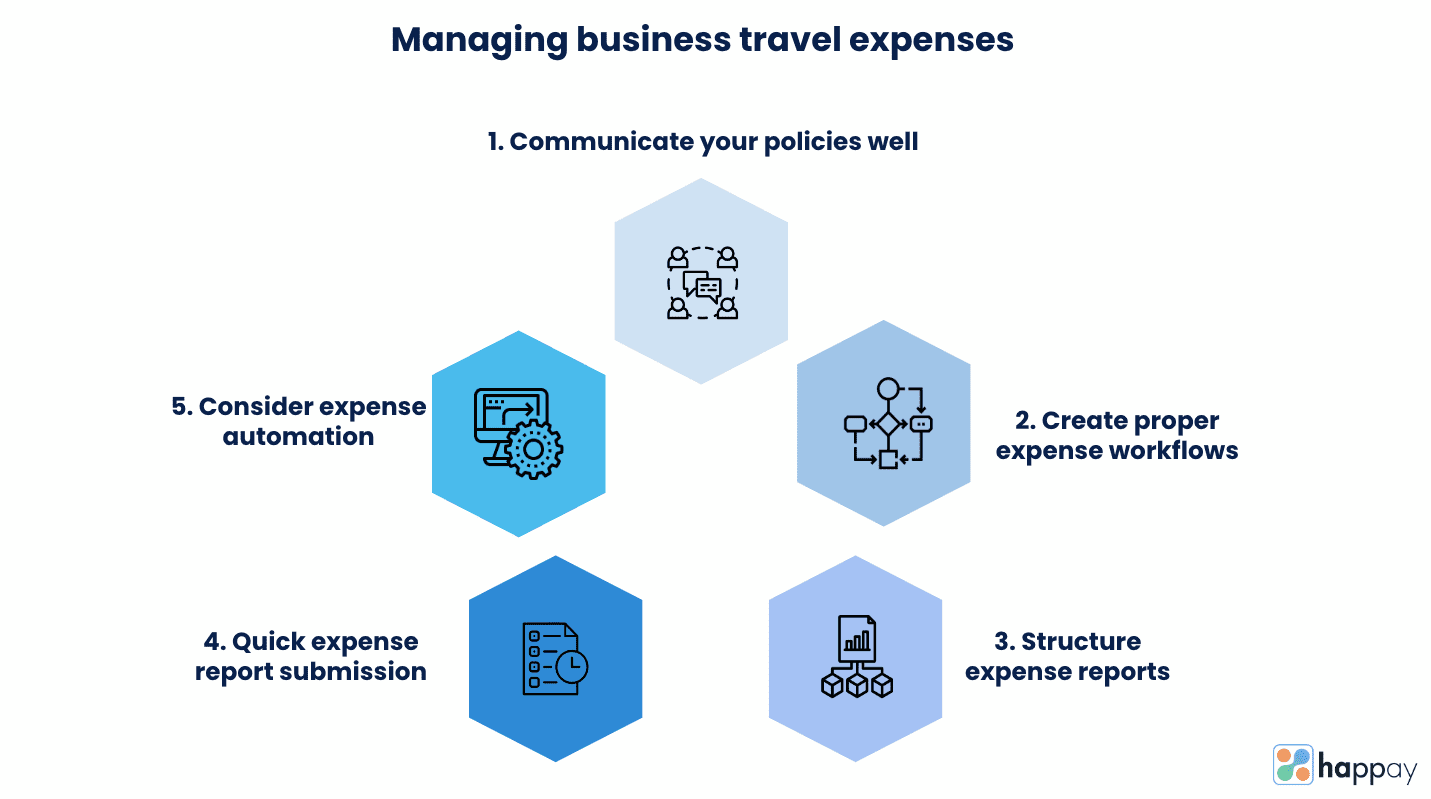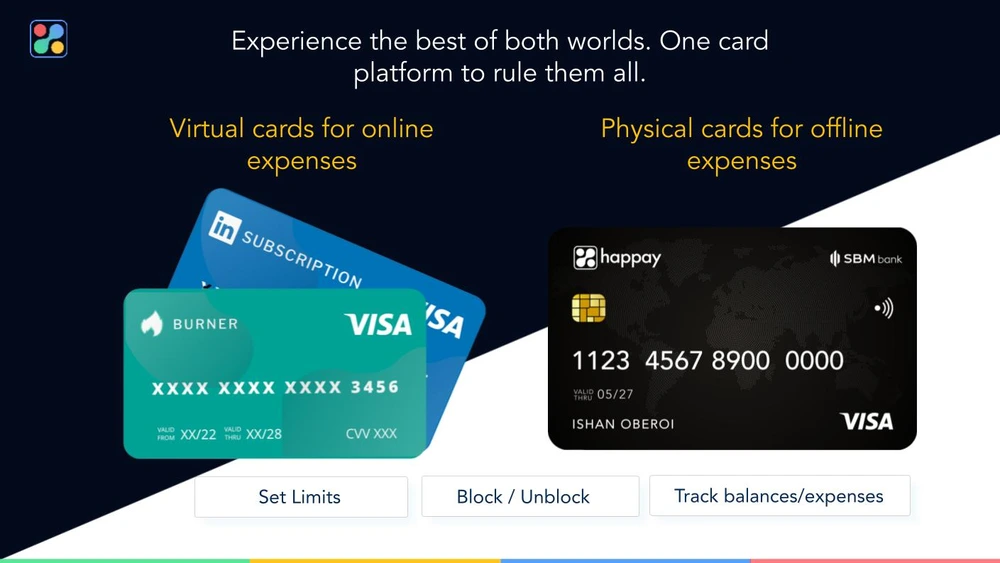Last Updated on November 28, 2025
Introduction
The top sale executive for an insurance company finds himself stranded on a beach. Here’s how his conversation with the only other living being around!
Kevin: Oh! Are you stranded too? You have wings. Why don’t you just fly away?
Sea Gull: It’s easy for you to say. Do you know how much risk I take every time I fly?
Kevin: Hey! I have a solution for both of us!
If I talk to you about an insurance policy, I can claim this “strancation” (stranded vacation) as business travel expenses. You can feel safer out there in the skies!
……Sea Gull slowly slinking away from him
According to studies, the business travel market is set to pick up the pace and reach $829.5 billion by 2027. Organizations study the different metrics associated with business travel expenses so they can manage them better.
Among the numerous metrics, travel managers rank policy compliance and expenses as the most critical metric. Let’s try and understand everything there is to know about business travel expenses.
What are business travel expenses?
Expenses incurred by employees during their travel for business purposes are business travel expenses. The value of such an expense depends on the kind of business travel (air, train, bus, etc.) and the employee’s grade (if it is a director or an employee at a lower level of the organization).
For work, such travel may be from their residential city, state, or country. Based on the distance traveled and the number of days the business trip extends into, the person may incur expenses for food, accommodations, and others needed to accomplish business goals.
Types of business travel expense
The definition of business travel costs may vary depending on the organization. For instance, a small business that conducts a significant part of its business locally may define business travel expenses in terms of mileage(cab) or fuel charges(personal vehicle) to reach a client.
On the other hand, a large enterprise may define the term as any expense incurred to further its organization’s goals (including airfare, hotel accommodations, and even broadband connections).
Let us look at claimable and non-claimable business travel expenses.
Also, Read: A Guide to Travel and Expense Management
Claimable travel expenses
1. Travel expenses
Any travel outside the residential city qualifies as travel expenses. So, bus, train, air, and cab fares directly qualify as business travel expenses. The definition only differs in terms of the kitty available for usage.
For instance, if we take the example mentioned above, smaller businesses may have smaller budgets available for local travel. On the other hand, larger enterprises may have guidelines that discuss limits for air or train fares.
2. Food expenses
Business meals with customers or food and drinks employees consume during business trips are claimable as business expenses. Such expenses, as long as they are not lavish or extravagant, can qualify as business travel expenses. However, small or big, employees must back these expenses with valid receipts.
3. Promotional and shipping expenses
Would you reimburse expenses incurred to move magazine and brochure racks, standees, and other equipment for stalls at promotional events?
Business travel expenses are unique for every traveler. Generally, employees travel to meet and promote businesses. Some promotional events may require the display of banners, boards, etc. You might also need to make brochures and distribute them during the event. Moving to and from the location of such events may involve expenses. Such expenses qualify as business travel expenses.
4. Hotel accommodation expenses
Hotel stays are one of the most common categories in business travel expenses. Travel and expense policies must mention the details (limitations, vendors, category of rooms, prices, etc.) so employees can clearly understand what is allowed during business trips.
Manual processes may cause concern as employees file expense reports after they incur such expenses. It may be too late to correct or reject a booking. Hotel bookings (typically completed before actual travel) may be approved/rejected before you finalize them.
If it exceeds the limit agreed upon for the employee, the system may flag it off, letting the employees know they must choose another option. In such cases, Happay’s Smart Audit is transformational, as the built-in internal controls make a huge difference.
5. Fuel consumption or mileage tracking
Business travel expenses may be fuel, tolls, and parking fees. Therefore, expense policies include details of fuel reimbursement for such categories. However, there must be proof that employees incurred such expenses were incurred for and during business travel.
Companies following manual methods to track and record such business travel expenses may need help to assess if employees are overcharging or padding business travel expenses.
Here, well-designed expense management software can make a difference. Happay’s expense tracking software app does an excellent job of making expenses and travel claims effortlessly easy. The app provides a route tracker (GPS-enabled) that helps your on-the-road employees to submit mileage reports without much work at all.
A simple source location and destination entry ensure the app takes care of the rest. You can access a detailed real-time report with mileage information with just a click.
6. Communication and other expenses
Many companies are now reimbursing mobile and other expenses associated with ensuring that employees can communicate with customers uninterruptedly.
You can add amounts spent on the internet and mobile connectivity (within permissible limits) to business travel expense forms for reimbursement claims.
7. Incidental and other expenses
In many companies, laundry and dry cleaning expenses are reasonable business travel expenses. Employees can provide receipts for these expenses (within the permissible limits) and several other incidental expenses that are not part of the list of claimable expenses.
As long as these expenses are mentioned as “claimable expenses” in the travel and expense policy of the organization, they can expect reimbursement of these expenses.
Non-claimable expenses
Employees may claim amounts spent on items, food, or other expenses for personal purposes. Organizations can reject such expenses whether employees use corporate or personal credit cards.
The expenses in the below categories can be considered personal rather than business travel expenses. Therefore, if your expenses are not incurred during your work or do not contribute to the overall business goals, employees may not claim reimbursements against them.
1. Personal expenses:
Any expenses that satisfy a personal goal or you incur to satisfy your needs qualify as personal expenses. For instance, shopping for family members or traveling to a different location (not sponsored by the company) for sightseeing out of personal interest falls under personal expenses.
However, if you are taking your customer out sightseeing for customer engagement, it can be claimed as business travel expenses.
2. Associate expenses
Many times, employees choose to travel with family during business trips. However, you cannot claim a companion’s travel, accommodation, and subsistence expenses as business travel expenses. It qualifies as personal expenses.
3. Everyday expenses for travel to work
Employees cannot claim everyday travel to work (from home to office) as business travel expenses. Unless there is an express mention of the same in the employee’s contract that allows them to claim such expenses, it is considered personal expenses. The same can be said for parking fees too.
Suggested Read: 6 Best Travel & Expense Software
Business travel expense process

1. Capturing business travel expenses
1.1 Manual
Several enterprises continue to use manual processes to capture business travel expenses. Manual methods are not ineffective, but as companies grow, time-taking processes, human errors, and employee experiences can become frustrating. Let us look at a typical manual process of recording business travel expenses.
- When employees travel, they incur expenses. However, employees must have receipts, bills, or other handwritten notes to back them up.
- For instance, employees must preserve receipts of food and drinks consumed at hotels and restaurants during business travel. They must attach the receipt to the business travel expense form as it validates the business expenses.
- Some employees submit business travel expense forms as soon as they return from a trip. In other cases, as per the travel expense policies of a company, they may do so periodically (Fortnightly, monthly, etc.) The employee continues to put together the various receipts and bills accumulated during the business trip.
- Once you complete the trip, the employee puts together a travel expense report form and attaches the proof of expenses. These may be in the form of pictures, printed receipts, or handwritten payment confirmations.
- Finally, employees hand over the forms to the concerned department in the company.
These processes, when followed precisely, are effective. However, it is a drain on your employees’ productive hours and requires much time to cross-verify information. Further, human errors and the risk of fraud make this a far less effective way of capturing business expenses.
1.2 Automatic
Automated expense management solutions that capture business travel expenses are one of the most effective tools for efficient expense management workflows.
Expense policies may be unique to businesses; however, capturing expense-related information is the same across all companies. So, let us look at a typical capturing process for business travel expenses.
- The travel expense capture begins when the employee incurs a business expense. It could be a flight or travel booking. Expense management software offers expense-tracking apps that can capture expenses immediately.
- For instance, Happay offers an exceptional expense tracking software app that allows you to manage all your expenses through the mobile app. A Smart Scan feature automatically reads and imports the receipt details. Further, you need not worry about policy compliance or delayed approvals anymore. With the Happay mobile app, the process is fool-proof and fast.
Check out this video to better understand how the app captures expenses.
- Once the details of the receipts are captured and submitted successfully, users can generate or download the business travel expense form immediately.
- Your policies are built into the system’s architecture; therefore, you will receive notifications of any non-compliant expense claims. In some instances, you may require clarifications; in others, you may reject the claims. Also, you may customize the software to suit your requirements and needs.
An automated capturing system is perfect for businesses as it shortens the time it takes to approve or reject claims. Also, the turnaround time for reimbursements comes down dramatically. Such a reduction in reimbursement times directly affects employee experience and productivity.
Quick Read: Automated Expense Reporting
2. Management of business travel expenses
Automating expense management is the best way to manage your business travel expenses. However, if you are not there just yet, here are a few tips to help optimize your workflows.

2.1. Communicate your policies well
To control business travel expenses, you must ensure all your employees know the travel and expense policies. These policies may be extensive and too much, but it is always possible to create informative, short, and easy-to-remember decks that may be circulated often among employees. Well-informed employees rarely submit non-compliant business travel expense forms.
2.2. Create proper expense workflows
The idea is to ensure a natural flow in the expense process where one step leads to another. This process has three essential stages- receipt collection, submission, and reimbursement. Your guidelines must focus on these subjects. Make sure you address the common concerns that employees face.
- There must be clarity on how much employees can spend on any business trip
- Encourage employees to save receipts in standard formats (PDF or electronic versions as per company policy).
- Set strict deadlines for submitting business travel expenses and communicate the same.
- Just like the submission deadlines, you must also define reimbursement timelines clearly.
2.3. Structure the expense reports
Generally, the risk of errors increases when there is no order or structure in a process. When you devise a workflow for capturing or reporting business travel expenses, ensure you insist on a specific system.
A structured and standard format offers enough opportunity for employees to attach just what is required. For instance, you can insist that employees follow the date of expense (oldest to latest) for the order of submission. It will benefit both the employees and employers.
2.4. Make sure there is no delay in submissions
The longer the delay in submitting expense reports, the more likely there will be errors or missing information. So, always ensure that employees submit claims within a short period of completion of business trips.
2.5. Automate with an expense-tracking app
An expense tracking app works exceptionally well to manage business expenses. Apart from making it easy for employees to capture and record receipts and other proof of expenses, the app speeds up the process.
It also offers a bird’s eye view of the expenses allowing you to plan and budget more accurately. Further, the access to sharp insights and visually appealing charts and graphs analyzing the expenses gives you better control over the business expenses.
You can click on the link if you want to download the app.
3. Reconciliation – calculating business travel expenses
3.1. Record your expenses accurately
Employee business travel expenses are tax-deductible in several countries, and it can save your organization money. However, there are other reasons to keep a comprehensive record of business expenses.
Such records can help you understand your company’s spending patterns and are extremely useful during auditing. Ensure you appropriately tag your expenses (department-wise, trip-wise, or expense-wise, etc.) and that all necessary details are present.
3.2. Calculating total expenses
It is essential to record and account for all personal expenses, entire trip expenses, or the total business expenses per trip is far more critical. As you project expenses for the future and begin work on budgets for projects and departments, these overall numbers will be far more helpful than individual expense numbers.
3.3. Categorization of business trip expenses
Classification is an integral part of the accounting process. When you classify business travel expenses into relevant categories for your organization, it becomes easier to identify the problem areas. For instance, when you categorize flight expenses separately, you can understand your flight expenses for a period or different departments.
Similarly, you can categorize small or incidental expenses to understand how much employees spend in this category.
3.4. Projecting your spend
Based on the numbers you have added to your spreadsheets, you can come up with projections on how much you can allocate for future business trips. It may be time-consuming in manual processes, but automation can give you these numbers quickly and in real-time.
3.5. Target quick reconciliations
Finally, insist on the early submission of expense reports, as this will help you to reconcile your accounts faster. Early submissions also mean a quick reconciliation and a faster reimbursement.
Suggested Read: How to Reconcile Your Expenses?
4. Reimbursement of the business travel expenses
4.1. Per diem or an everyday allowance
Per diem is a per-day budget for employees who travel for business purposes. Such a compensation method covers business expenses such as subsistence costs, food, and accommodations. The rates may depend on factors such as the employee’s grade, travel city, period of stay, etc.
While many organizations continue to do this manually, Happay’s expense management software can help you configure per diem calculations based on the criteria mentioned above. It can also auto-calculate per diem amounts based on trip details. Based on this information, you can automatically transfer (domestic and international) money to their bank account.
4.2. Corporate credit cards
You may issue corporate credit cards to your employees so they can conveniently pay for business travel expenses. The most significant advantage for employees is that they need not use personal funds for such expenses. Further, they need not wait to receive reimbursement too.
Also, cards provide immediate and easy access to real-time data relating to expenses. For instance, Happay corporate cards (physical and virtual) give you 100% visibility into your spend data and analytics. Furthermore, this (real-time) information is available on the Happay Expense Dashboard.

Secondly, controls on business travel expenses are far more robust and efficient with corporate credit cards. From a centralized location, you can block/unblock cards, add/withdraw funds, and even pre-configure limits for spending.
Thirdly, all transactions are reconciled in real-time and automatically, lowering the amount of time the finance team spends on reconciliation.
Schedule a demo with us if you want to know more about Happay corporate cards.
4.3. Cash advances
Cash advances may seem cumbersome. However, it can have its advantages. Employees who travel to new places may incur small cash expenses or purchase from stores that do not support card or online payments.
Employees can provide receipts against the reported expenses on return from such trips. They may return any excess cash to the organization.
4.4. Post-trip reimbursements
One of the most common ways of reimbursing business travel expenses is to settle it post the trip. While many choose to estimate the cost of the trip and give employees a cash advance, estimation is not only tough to predict, but small businesses may worry about fraud or other problems that come with handling cash.
You can reimburse employees based on the expense reports that detail the expenses. Employees must file those reports and proof of expenses so the finance team can verify the claims.
Expense tracking apps can auto-capture receipts, while managers can approve/reject claims with a touch of a button. Expense management software can completely automate this process alleviating time delays and errors. A well-integrated expense management solution will integrate seamlessly with your accounting software too.
Also, Read: A Guide to Expense Reimbursement
Challenges in business travel expenses
You can attribute the increase in business travel to several factors. While a need to engage with your customers on a more personal level is the most pressing, the increase in mobility and business travel has led to several challenges in handling business travel expenses.
1. Time-consuming manual processes
1.1 Capture
Can you talk about expense reimbursements without considering the effort involved in saving and filing all those physical receipts?
Receipts and proof of expenses as they validate these business expenses and are critical in the audit process. Unfortunately, their multiple formats lead to challenges such as
- Increase in time and effort to accurately collate, verify and record them.
- The number of transactions and time constraints lead to errors and time delays.
Further, when you combine such methods with manual processes, you are looking at several issues, such as
- Compliance issues
- More rejections than settlements
- Settlement delays
- Low employee satisfaction or morale
1.2 Review and approval
Talk to any accounting professional, and they will agree that making sure approvals are in for expenses is one of the most painful processes in the travel and expense process.
Usually, the process involves
- Once the employees submit the expense form, corresponding managers review expenses and approve the claim.
- Finance teams must complete these expense forms, going through each claim manually.
- If claims are not compliant, these may be sent back to the employees for correction or as rejected claims.
The multiple iterations, emails back and forth, discrepancies, and other issues lead to delays, not to mention frustration for employees and finance professionals.
Suggested Read: What is Business Travel Spending?
2. Unclear travel and expense policies
Ever tried to navigate an Amusement Park without a map? Well, a travel and expense policy must be like that- a guide that tells you exactly what you must do and must not! No ambiguity!
Unclear policies confuse employees about the business travel expenses they can claim confidently and those they cannot. Such policies will lead to
- Long reimbursement turnaround times
- More rejections than approvals
- Long and arduous reconciliations for finance teams
3. Lack of visibility in spending trends
As a CFO, you know that budgets and forecasts are a norm in finance. But how effective do you think such efforts are without access to data reports put together with real-time information?
A lack of visibility in spend is due to several reasons:
- Manual processes
- Use of legacy systems that don’t speak to each other
- The complex architecture of your existing systems
4. Delayed reimbursements
When the accountant asks an employee if he has submitted his expense report (long due), he says, “I promise I will get it. Just thinking about putting together those receipts and compiling them gives me jitters.”
When you ask your finance team why the reimbursements are not credited, they say one of the following statements. “Oh, we are still waiting on the approvals.” “I have sent an email to employees for some clarification.” Or “ I was reconciling them until late into the night yesterday; I will get right on them.”
So, there are several reasons for delayed reimbursements. It is truly one of the most significant challenges for most organizations. Understanding your existing process is the first step in addressing the challenge successfully.
Also, Read: A Business Guide to Corporate Travel Management
Best practices in managing business travel expenses
1. Communicate your policies well
It is important to publicize and promote your travel and expense policy. If you communicate the guidelines extensively and well, there is a greater chance that your employees will align and comply with the policy expectations.
Did you know that two-thirds of participants in a research project said they have not read the company’s expense policies?
So, ensure your employees do not fall in the above category by
- During travel season, send relevant emails about policies before business travel.
- Use the company’s intranet or other platforms regularly used by employees.
- Teams and department meetings must include a discussion on the same
- HR must ensure that such information is easily accessible to everyone.
2. Adopt a travel expense process that works for you
There are two ways to reimburse employees for business travel expenses. One is to allow the employees to pay and reimburse them later. The other is to equip them with corporate credit cards and pay the vendors directly.
2.1 Employee pay and you reimburse
Considering the long winding process (especially if your operations are manual), reimbursement turnaround times may be extended, leading to low employee morale.
2.2 Use corporate credit cards
Here, corporate credit cards can ease the pain to a considerable extent by ensuring that you can automatically track and reconcile transactions.
3. Review the expense claim process
It is important to constantly reevaluate your expense claim process to ensure that it is efficient and gives you the necessary visibility to strategize. If your organization grows, you must consider scaling up to expense management software. Some factors to bear in mind as you reevaluate your workflows.
- The most crucial stage is capturing proof of expense. So, if it is a manual process, make sure it is clear, streamlined, and well-documented.
- If using expense reimbursement software, your software must integrate well with your existing software. If there are gaps, ask your vendor if there are upgrades that can improve the performance of the software.
- Does your business travel expense process offer visibility into your expenses? If not, consider upgrading to expense management software to address it.
- What is your expense reimbursement turnaround time? You can shorten it with automation.
Conclusion
Business travel expenses are unavoidable for all businesses. The only way you can make it work is by managing them effectively. Consider automating with Happay’s expense management software, as it can remove the pain value associated with the process while giving you 100% visibility into the expenses.
FAQs
Business travel expense is any expense incurred by employees during a business trip. Such expenses could be flight or train fares, hotel accommodation charges, or meal payments during such trips.
Business trips (including overnight or day trips) take employees outside the city of their residence.
Business travel expenses include expenses incurred to travel, stay, eat, or ship business-related items to the client site or city.
All companies provide business travel expenses. However, there are limitations on the amount you can spend. The permissible limit is based on your experience and grade in the company, the client, etc.
The claim amount or total travel expenses you may claim depends entirely on your company’s travel and expense policies. The amount will vary based on your pay scale, eligibility, grade, and other details mentioned in the guidelines.










Discussion about this post